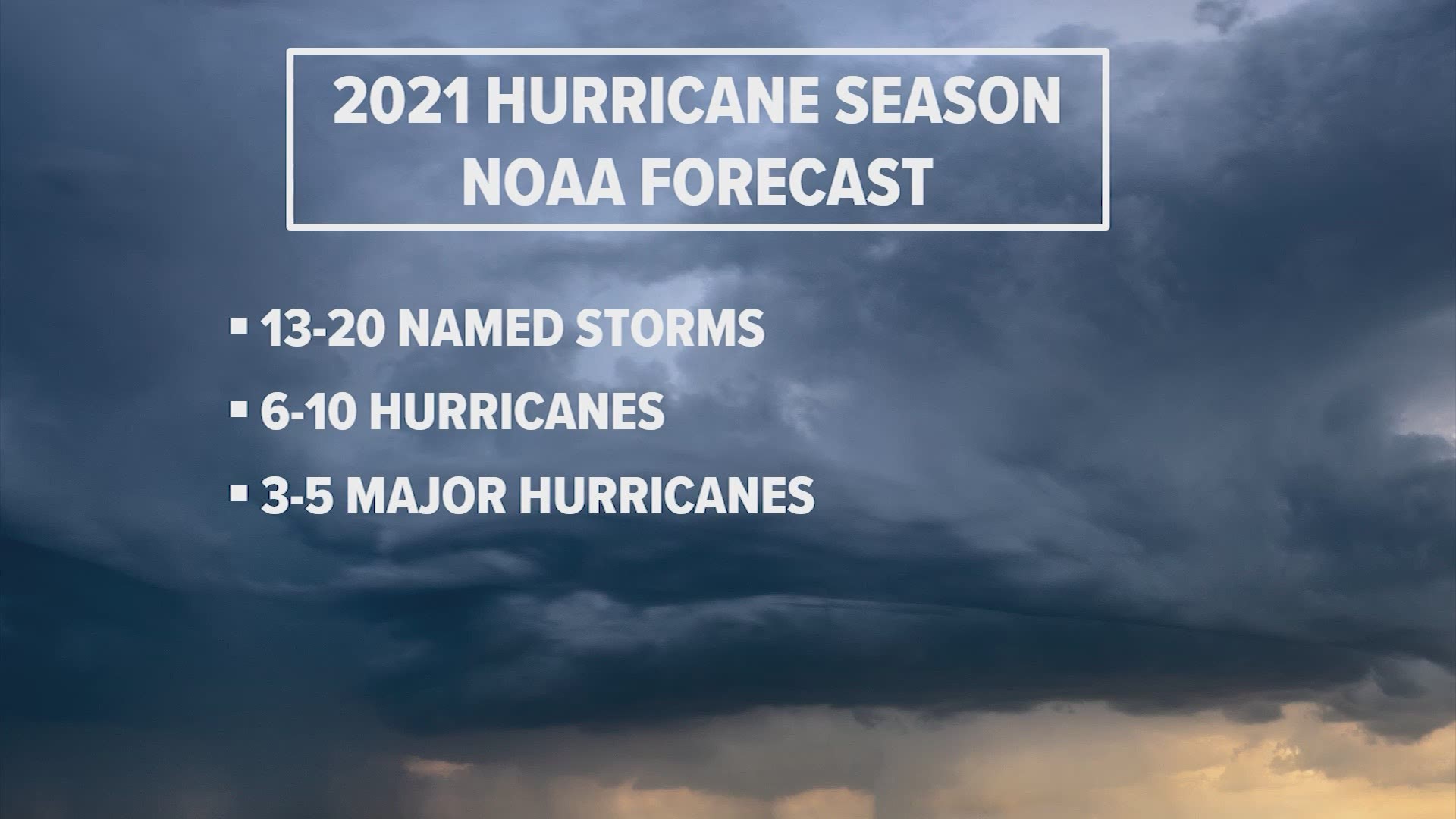HOUSTON — The National Oceanic and Atmospheric Administration is the leading authority on hurricane forecasting in the United States, and their weather experts predict the 2021 hurricane season will be above-normal.
Hurricane season officially begins on the first day of June each year, and we've already had our first named system, Tropical Storm Ana. NOAA expects the United States may see up to 20 named storms in 2021, including the possibility of six to 10 hurricanes in addition to three to five major hurricanes.
Fortunately, NOAA does not anticipate a repeat of the historic level of storm activity from last season. In 2020, we saw 30 named hurricanes, including 13 hurricanes and six major hurricanes.
The government agency is predicting a 60% chance of an above-normal 2021 hurricane season; a 30% chance of it being near-normal; and a 10% chance of it being below-normal.
What's the difference between a hurricane and a major hurricane?
The National Hurricane Center, which is a division of NOAA, determines the potential danger of a storm based on a category between 1 and 5.
This ranking system is formally called the Saffir-Simpson Hurricane Wind Scale.
Normal hurricanes are categories 1 and 2. They have winds anywhere from 74 mph to 110 mph. Meanwhile, major hurricanes are categories 3 through 5 with winds ranging from 111 mph to 157 mph or higher.
The scale does not take into account other potentially deadly hazards like storm surge and rainfall flooding. There has been lengthy discussion about whether those factors should be added. It's mostly focused on the potential property damage.
KHOU meteorologist Addison Green gives a visual explainer of each category in the following YouTube video:
Here is how NOAA explains it:
- CATEGORY 1 - Very dangerous winds will produce some damage: Well-constructed frame homes could have damage to roof, shingles, vinyl siding and gutters. Large branches of trees will snap and shallowly rooted trees may be toppled. Extensive damage to power lines and poles likely will result in power outages that could last a few to several days.
- CATEGORY 2 - Extremely dangerous winds will cause extensive damage: Well-constructed frame homes could sustain major roof and siding damage. Many shallowly rooted trees will be snapped or uprooted and block numerous roads. Near-total power loss is expected with outages that could last from several days to weeks.
- CATEGORY 3 - Devastating damage will occur: Well-built framed homes may incur major damage or removal of roof decking and gable ends. Many trees will be snapped or uprooted, blocking numerous roads. Electricity and water will be unavailable for several days to weeks after the storm passes.
- CATEGORY 4 - Catastrophic damage will occur: Well-built framed homes can sustain severe damage with loss of most of the roof structure and/or some exterior walls. Most trees will be snapped or uprooted and power poles downed. Fallen trees and power poles will isolate residential areas. Power outages will last weeks to possibly months. Most of the area will be uninhabitable for weeks or months.
- CATEGORY 5 - Catastrophic damage will occur: A high percentage of framed homes will be destroyed, with total roof failure and wall collapse. Fallen trees and power poles will isolate residential areas. Power outages will last for weeks to possibly months. Most of the area will be uninhabitable for weeks or months.
Hurricane Harvey, which made landfall in Texas in August 2017, was a category 4. At the time, it was the first major storm to hit the Lone Star state in nearly a decade. NHC reported its highest sustained winds were recorded at 130 mph.
As of today, Hurricane Michael is the last Category 5 hurricane to reach the U.S. It touched down near Tyndall Air Force Base, Florida in October 2018. Hurricane Michael's highest winds reached 160 mph.
Hurricane Harvey and Hurricane Michael left catastrophic damage and countless lives were lost.
Most dangerous hurricane in U.S. history
The deadliest hurricane on record — and the deadliest natural disaster in U.S. history — was the Great Storm of 1900 that made landfall in Galveston. We now know it was a Category 4 hurricane.
A lack of storm tracking technology and no hurricane preparation left people living on the coastline completely exposed. As a result, an estimated 12,000 people died.
Of course, that's an extreme incident with many uncontrollable variables, such as a lack of hurricane knowledge and communication technology at the time.
Still, the bottom line remains, hurricane preparedness and vigilance — paying attention to the experts monitoring weather conditions and instructions from emergency managers — heavily influences the impact a hurricane will have on lives.
MORE HURRICANE RESOURCES:

